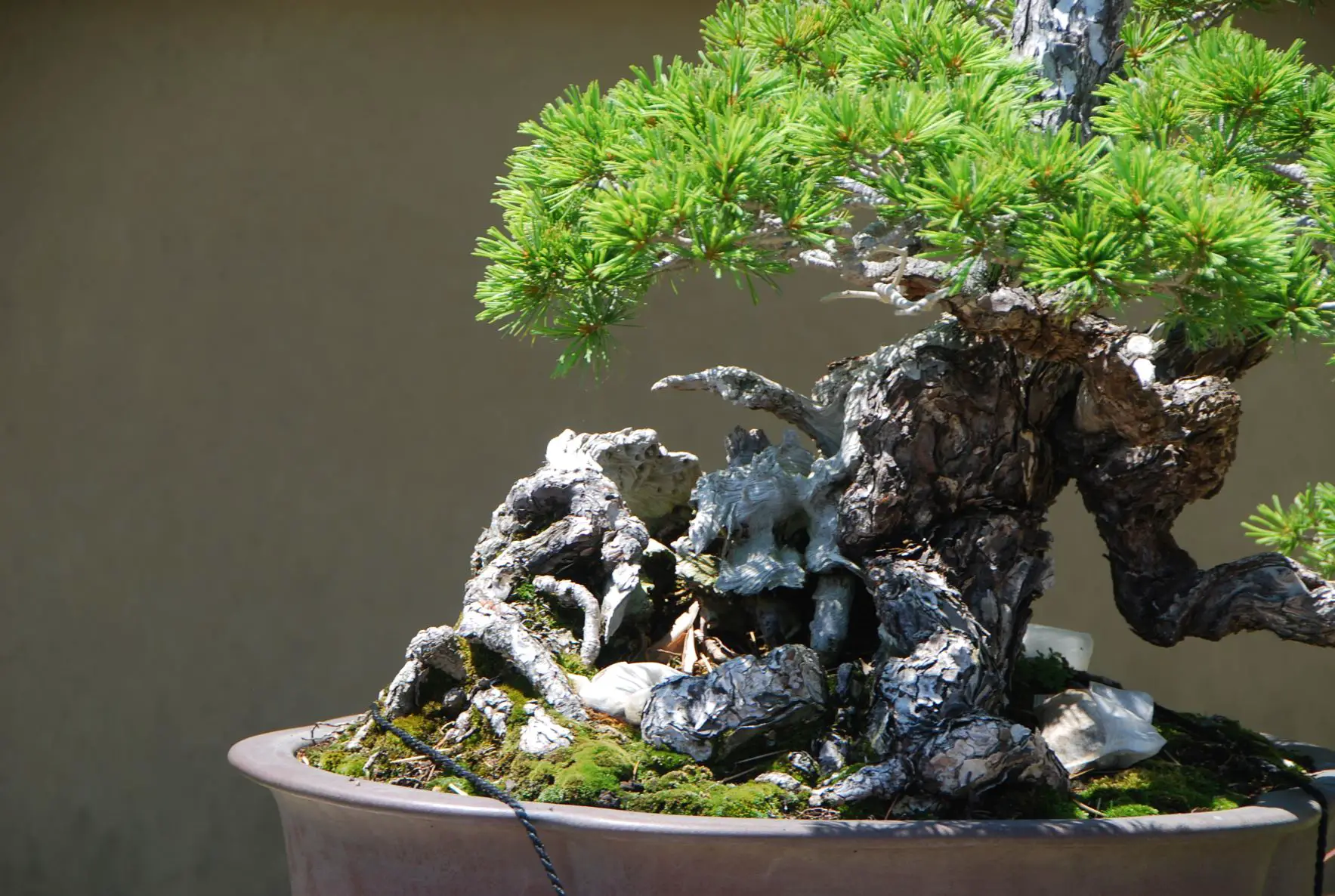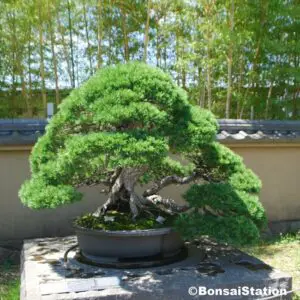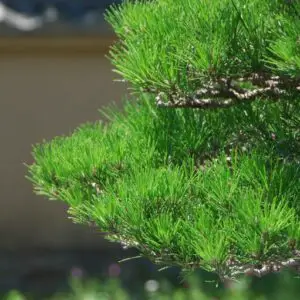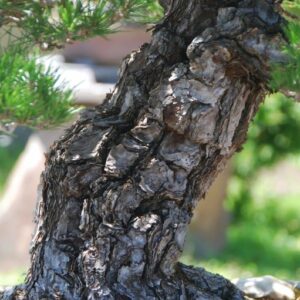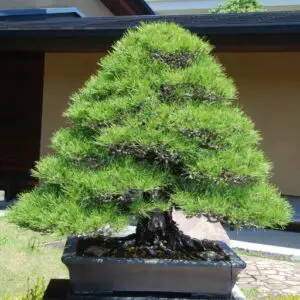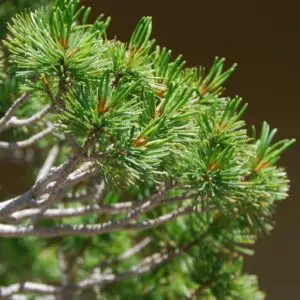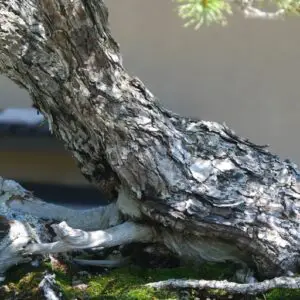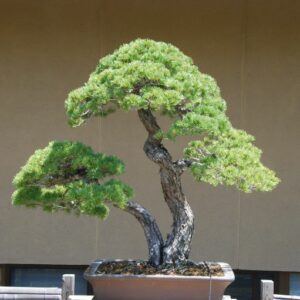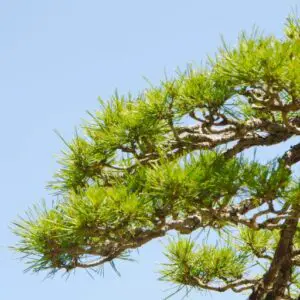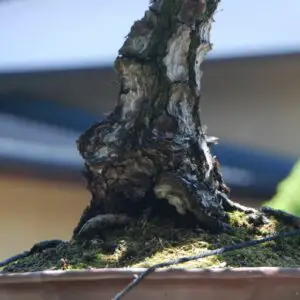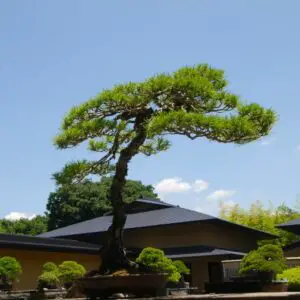Japanese black pine (Pinus thunbergii) and Japanese white pine (Pinus parviflora) are the best for pine bonsai because they can be shaped in any bonsai style, have beautiful needles throughout the year and have attractive rough, hexagonal bark.
Pine trees: general description
A pine tree is an evergreen coniferous tree in the genus Pinus. There are about 120 species (some consider about 180) in the genus Pinus growing mainly in the Northern Hemisphere, including North America, Europe and Asia.
Although a large part of pine trees grow naturally under a temperate climate, they can survive in extreme weather, hot and cold, growing in barren soil.
Pine trees are known to live very long. In fact, the (thought to be) oldest tree on earth is a pine tree named Methuselah. It is nearly 5000 years of age, located in a remote desert between California’s Sierra Nevada range and the Nevada border (source: USDA).
Pine trees can live long in a tiny bonsai pot as well. Three of the top five oldest trees in the collection at the Bonsai Art Museum, Japan, are pine trees with an estimated age of 500 years and 450 years.
The best pine trees for bonsai
What’s necessary for a good pine bonsai
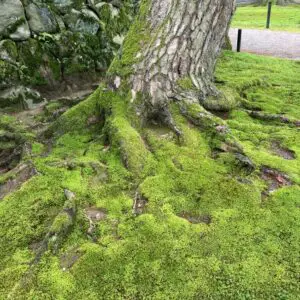
Surface roots (Nebari) on an old pine tree
There is a wide variety of pine trees around the world but not all are suitable for making a bonsai. To be a good pine bonsai, a tree needs;
-
- To be able to grow small;
- Short and dense needles;
- Beautiful needle color (green and shiny);
- Thick, rough and scaly bark that does not come off easily; and
- Good surface roots (nebari).
Taking these desirable characteristics into account, Japanese black pine (Pinus thunbergii) and Japanese white pine (Pinus parviflora) are the best for pine bonsai among all pine trees.
The best pine bonsai
Japanese black pine (Pinus thunbergii)
Japanese black pine is the best pine for bonsai because;
- it is sturdy and can respond well to hard pruning and wiring for shaping;
- it has beautiful shiny dark green needles;
- it has thick, rough and scaly bark; and
- it can develop good surface roots (nebari).
Needle description
| Color | Dark green |
| Length | 3-5 inches (7-12cm) |
| Cluster | 2 |
| Description | Stout, twisted, half-round, pointy |
Bark
| Color | Dark grey |
| Description | Thick and rough, divided into vertical, hexagonal grooves by deep fissures. |
Why Japanese black pine makes a good pine bonsai
- Japanese black pine is extremely strong as a tree. It tolerates hard pruning and wiring to be shaped into any bonsai style. It rarely is infested by pests and diseases.
- It grows well in a tiny, shallow bonsai pot and can thrive well with only water.
- It does not need constant work and care and can be managed fairly easily. Unlike deciduous bonsai trees, the shape of Japanese black pine bonsai trees would not easily deform with the growth once the basic shape has been established.
- It has a very long lifespan even if it is made into a bonsai.
- Its trunk can thicken considerably as it grows in a bonsai pot, appearing as an old, sturdy tree.
- Its dark grey bark becomes thick and rough as it ages.
- Its dark green needles are beautiful when placed under the sun, which you can enjoy all year round.
Japanese white pine (Pinus parviflora)
Japanese white pine is the best pine for bonsai because;
- it is strong and can be shaped in any bonsai style;
- it has short, dense and light green needles;
- it has appealing bark; and
- it can develop good surface roots (nebari).
Needle description
| Color | Light green |
| Length | 2.0 – 2.5 inches (5-6cm) |
| Cluster | 5 |
| Description | Soft, flexible, round tip |
Bark
| Color | Pale to dark grey (depends on cultivars) |
| Description | Smooth and thin when young. When mature, divided into medium-sized ridges by shallow fissures. |
Why Japanese white pine makes a good bonsai
- Japanese white pine is extremely strong as a tree and can adapt to both hot and cold weather. It can maintain a considerably long life.
- Its trunk grows steadily with fertilizer, though not thicken as Japanese black pine. The trunk is naturally round and beautiful in appearance.
- Its pale grey bark can appear ancient and timeless as it ages.
- Its light green needles are short and dense.
- It can be shaped in any bonsai style and be a large or a mini bonsai. Maintaining its shape is fairly easy as it grows relatively slowly.
- It can easily be propagated from seed, cutting or graft.
Other good pine bonsai species
Japanese red pine (Pinus densiflora)
Leaf description
| Color | Light green |
| Length | 2-5 inches (5-12cm) |
| Cluster | 2 |
| Description | Soft, half-round, slightly twisted |
Bark
| Color | Dark red (can be blackish) |
| Description | Thin when young. When mature, divided into thick, hexagonal, groovy ridges by deep fissures. (Depends on cultivars.) |
Why Japanese red pine makes a good bonsai
- Japanese red pine is strong as a tree. It grows well in sandy soil and tolerates the heat and dryness of summer well. It grows well in a shallow bonsai pot.
- Needles are short, thin and soft. Their color is light green throughout the seasons and is especially beautiful in early spring when it turns slightly reddish.
- It is suitable for growing as a bonsai and can be shaped in any bonsai style.
Some of the shortcomings as a pine bonsai
- The trunk is rather slim and would not thicken as that of a Japanese black pine. The bark is thinner and has a finer texture.
- The color of the bark tends to become darker from beautiful red-brown when planted in a bonsai pot.
- It does not grow well in less-ventilated, polluted air. So, it is not a pine tree for a big city.
Jack pine (Pinus banksiana)
Leaf description
| Color | Light yellow-green, later becoming dark green |
| Length | 0.75-1.5 inc. (2-4cm) |
| Cluster | 2 |
| Description | Stout, flat, twisted |
Bark
| Color | Dark brown |
| Description | Thin with irregular rounded ridges |
Jack pine is a small- to medium-sized pine tree and has short needles, both of which make a good bonsai. Its needle color is beautiful and attractive as well. It is very cold hardy and can survive in sandy, dry soil.
Jack pine is one of the fastest-growing species among conifers, especially during the first 10 to 15 years. While it is enjoyable to see and feel the tree growing, it can be problematic as bonsai because maintaining its size as a bonsai tree can be difficult. Keeping its tree shape might be hard as well since it is tough to control it when it is growing fast.

